![[MetroActive Arts]](/gifs/art468.gif)
[ Arts Index | Sonoma County | MetroActive Central | Archives ]
The Artifacts: Diggin' those grooves--Karen and Steven Tamborski, and Dorian Irving.
For Arts' Sake
The 2nd annual Indy Awards, celebrating the spirit of the local arts community
Edited by Patrick Sullivan
IT'S BEEN SAID that Sonoma County harbors more artists per capita than any other place in California. Strictly accurate or not, it's a claim that feels right to those of us who live here. How else to explain the wellsprings of creativity that bubble up all over the area, even in the most unexpected places? In every field of creative endeavor, from music to theater to the visual arts to the dedicated administrators who pull it all together, talented folks throughout the county are offering innovative art to the community--and pulling the community into the arts.
Unfortunately, these efforts don't always get the recognition they deserve. And in other cases, an artistic endeavor grabs plenty of attention at the time, but its lingering effects on the community are not widely known. So, to celebrate that bountiful creativity, the Sonoma County Independent is once again shining the spotlight on local artists who have made outstanding contributions to the cultural scene.
The second annual Indy Awards honors eight individuals and institutions, from folks who labor in relative obscurity to others who make headlines on a regular basis. The recipients--selected by the newspaper's editorial board, including editors, staff writers, and contributors--are an eclectic group of established figures and unsung heroes. What they all have in common is their drive to make a difference in Sonoma County--to show us something new, something innovative, something important that we might otherwise miss.
So, without further ado, here they are, up close and personal.
Music makers: The folks at the Bodega-based Institute for the Musical Arts--(clockwise from the back, left) artists-in-residence Janelle Burdell and Ferron, and artistic director June Millington and executive director Ann Hackler--have created a unique space that helps women learn the ropes of the music biz.
Sound Garden
Institute for the Musical Arts
For June Millington and Ann Hackler , it began as a dream--a dream of providing a school where women could go and be treated seriously as musical artists or learn the ropes of the male-dominated recording business. In 1987, that dream became a reality when the two founded the Institute for the Musical Arts, creating a haven for musicians in search of inspiration, teaching, and friendship.
In 1991, the IMA found its home at the Old Creamery in Bodega, an artist's colony founded by the late painter Bill Moorehouse. Since then, many local musicians, including such notables as Copper Wimmin, have had their talents nurtured there, and the organization boasts an advisory board that includes blues/pop great Bonnie Raitt.
When it comes to the music industry, Millington had plenty of personal experience to draw upon. In 1969, she and her sister Jean founded Fanny, the first all-female rock band, which went on to score a recording contract with Warner Brothers. After leaving the band, Millington became involved with the women's music movement and later met Hackler, who was running a women's center. It wasn't long before they decided to open a school especially for women working their way into the music industry.
These days, IMA offers a variety of workshops--on subjects ranging from writing and composing to recording--that are open to women as well as men.
"We had been doing bimonthly concerts and workshops, but the fire marshal came in and we had to cut back on them," Hackler says.
The IMA now has several projects in the works, including women's-music star Ferron's soon-to-be-released album Inside Out. A portion of the proceeds from that album will go toward the IMA. Other projects include a new solo album by Millington and an album by Sonoma County artist Megan McElroy.
"We really work hard at encouraging new artists to start recording," Hackler says.
The future of the IMA, however, is on sinking sand these days, since the school is being evicted from its home at the Old Creamery. Hackler and Millington had been raising funds to purchase the building, but now they're struggling to find a new permanent location for the IMA.
"We're in a precarious place," Hackler says. "It's very costly for us to find another spot. We would need $150,000 just to put down on another place. As Sonoma County gets more and more developed, artist spaces and lofts have become subject to code and permit violations.
"The lack of affordable artist space is an issue that needs to be looked at and thought about."
Photograph by Michael Amsler
Center Stage
Lennie Dean
When someone tells Lennie Dean how "inspirational" she's been, or informs her that she must have "a very big heart"--and trust us, this happens rather often to Dean--the legendary local director and improvisational acting instructor just smiles and enjoys it, showing nary a twitch of discomfort or self-deprecation.
"I think it's true. I do have a big heart," she says with a laugh. "I love inspiring people! I seem to have no trouble seeing the full beauty of all my students' spirits."
The effusive Dean is the founder of Studio Be, part theatrical studio and part acting school, an increasingly vital part of the county's alternative theater scene since she opened shop in January of 1994. An adherent of the Method-based Eric Morris performance technique--"It's about acting," she says, "but it's mainly about learning to become a full human being"--Dean has acted in and directed numerous shows throughout the United States.
She is a fervent believer in experimental, often unknown playwrights, with a fondness for unusual, out-of-the-way performance spaces. She operates Studio Be from the 35-seat, engagingly named Romantic Tea Room, located at 208 Davis St. in Santa Rosa's Railroad Square. Studio Be's newest project is a monthly series of modern vaudeville performances called "ELIXIR."
After many years, Dean's career took a dramatic turn when she abandoned acting in order to teach. "For years, people told me I should teach," she recalls. "But I resisted. 'Those who can't do, teach,' I thought. But finally I surrendered to it--and the minute I did, amazing opportunities began to fall into my lap."
That experience might sum up Dean's philosophy of stagecraft. "Learning to act is about learning to take risks," she says. "And to do that we must have the willingness to claim all the colors we have within ourselves.
My job," Dean says, "is to show people their colors."
Photograph by Michael Amsler
Good Conduct
Jeffrey Kahane
Let's face facts: There's no shortage of excuses for bestowing awards on Jeffrey Kahane. The multitalented Santa Rosa Symphony conductor, music director, and world-class pianist has a long list of accomplishments to his credit.
In a time when the national appetite for classical music is widely perceived to be shrinking, the symphony Kahane conducts attracts both a growing audience and enough community support to enable it to be preparing to move into the $47 million concert hall now in the works at Sonoma State University.
But for Kahane's biggest fans, it's not the ticket sales or the building projects that matter most. Both, after all, are erected on the solid foundation of Kahane's innovative musical programming. And that programming depends on the conductor's trademark combination of personal skill and desire for community involvement--a mix perfectly exemplified by the recent War Requiem project.
This past April, Kahane led a vast array of musical talent--the full symphony and a chamber orchestra, along with three local choirs (including one from Santa Rosa High School) and three renowned soloists--in performing English composer Benjamin Britten's famous pacifistic work, written in 1961 to commemorate the tragedy of war.
It was, Kahane said at the time, the most ambitious project he'd ever undertaken. But the 43-year-old conductor and his many collaborators pulled it off in high style, garnering headlines around the Bay Area, and even receiving national attention.
"I think it was the most fulfilling and most powerful experience I've ever had as a musician," Kahane says now. "Not only was it was the fulfillment of a very long-cherished dream to perform it, but it also did something I love to see happen: it brought young people into the orbit of the symphony."
The project was financed in part by a rare grant from the National Endowment for the Arts, which was delighted with the results. Now the project is being talked about by classical-music people all over the country as a model for partnerships between arts organizations and local communities.
But Kahane is hardly one to rest on his laurels. Among other things, he'll be spending a week on tour with folk-rocker James Taylor in November. And he's already planning a follow-up to the War Requiem, another collaborative project with local schools that springs from his passion for educating young people--and everyone else--about classical music.
"I think outreach is essential," Kahane says. "One of the things that the War Requiem emphasized is that we are trying to destroy the idea that classical music is an elitist thing.
"I hope that it's a new model for reaching out to a community and providing artistic nourishment for everyone."
Photograph by Michael Amsler
Musical Madness
Roger Tschann
Grizzly Studios proprietor Roger Tschann wants you to know one thing about his Petaluma-based recording facility: It "smells like butt." The
Tschann--who is also the co-founder of Petaluma's Flying Harold Records--opened the studio in 1996 after realizing there were few cheap venues for young musicians who wanted to record.
"Five years ago, there weren't a lot of options for affordable recording. It was much harder for a band to make a record back then," says the affable Tschann, who has recorded hundreds of bands from Sonoma County and beyond, including Cropduster, Eric Lindell, the Wonder Years, and Skitzo.
Tschann's music rack displays an arm-span's length of CDs tracked at Grizzly Studios, which he operates at his Petaluma home. "It shortens the commute and it beats working," laughingly says Tschann, who has been laboring on a studio remodeling project that has languished in recent months.
Wall beams are exposed and the recording room itself is covered in the detritus of band culture--beer cans, microwavable food wrappers, and back issues of local music magazines. "I'm essentially a very lazy person and a procrastinator--that's really it," Tschann says. "It's obviously not a calculated scheme to entice people into the studio. It's just reality, no frills.
"The fact is I have five guys with amplifiers and three cases of beer coming over every day who sit on my couch and watch TV while another guy does overdubs," he says. "My whole house, including my bedroom, has become overtaken by the studio. There's no hope of ever having my house clean."
Indeed, it all fits the self-deprecating tack Tschann takes with Grizzly Studios, which is colloquially known simply as "Roger's."
So, here's the big question: Does Grizzly Studios really smell like butt?
"It depends on whose butt," Tschann responds sagely.
Photograph by Michael Amsler
Growing Concern
Sebastopol Center for the Arts
Eleven years is something of an eternity for a community arts organization. But since its inception in 1988, the Sebastopol Center for the Arts has not only endured but thrived.
The SCA's energetic promotion of the arts in Sebastopol has made it a model for organizations in other local communities--especially considering that the center has never been in the red financially.
Executive Director Linda Galletta, after taking a moment to knock on wood, says that the center's financial stability comes from its board of directors.
"The board is half business people and half artists, and they work well together," Galletta says. "The artists provide the creative spark, and the business people provide the savvy."
The diversity of the center's endeavors is astonishing. This year, the SCA organized the selection of Sonoma County's first-ever poet laureate, Don Emblen of Santa Rosa. A chapbook of poetry by local entrants in the SCA's annual writing contest will be published in the next few months by the Literary Arts Council. The Summer Music Series, sponsored by SCA and held in the downtown plaza, has just concluded; about to begin is Sculpture Jam II, featuring 20 sculptors who will collaborate on six pieces of public art to be placed in various locations through Sebastopol.
And through a grant from the Sonoma County Community Foundation, this year the center will initiate an "artists in schools" program that brings sculptors into Sebastopol classrooms to work with students.
The biggest project, though, is the center's pending relocation to the now-vacant Diamond Lumber Yard building. The move is still "very much in the planning stages," Galletta says, but--depending on the success of fundraising efforts--she expects SCA to take occupancy in the new digs by the fall of 2000.
Photograph by Michael Amsler
Free Verse
David Amador
There's a sort of Clark Kent cast to David Amador and his work with the Poetry Slam. By day, he's a mild-mannered employee of a local health insurance company. But once a month, on Monday nights, he becomes the mild-mannered coordinator of the county's rowdiest poetry reading.
The 37-year-old Amador set up the slam in April of 1998 as a program of Actors' Theatre and has been running it ever since. Under his guidance, the monthly mosh pit draws an average of 50 people a month--though sometimes it's standing room only--to the theater at the Luther Burbank Center. But Amador is quick to praise the local poetry community and would rather give credit for the event to all the local poets who participate.
"I don't do anything but give them an excuse to get together," he says modestly. "They make the evening go."
Of course, where the evenings go is almost entirely a matter of chance. Other than a guest reader, the itinerary of a slam depends on who shows up. It's like an open mike, only with an applause-o-meter. Participants sign up at the door, and then one by one recite their works to the hooting, hollering crowd and the panel of judges in the front row.
Finalists get to compete in the newly instituted refrigerator-magnet round--on an actual refrigerator door--which puts a final '90s twist on an age-old tradition of public poetry that Amador is pleased to help preserve.
"Poetry slams return poetry to its roots," he says, "where a poem was a collective event of dramatic proportions."
Photograph by Michael Amsler
Pick and Grin
Tom Ribbecke, Charles Fox, Todd Taggart
In the space of four years, the Healdsburg Guitar Festival has blossomed from a small, informal gathering of guitar enthusiasts into one of the most highly anticipated and eagerly attended events of its kind in the world.
In its second year, the festival's success prompted The Economist, the notable London magazine, to dub Healdsburg the center of the acoustic guitar universe. And with luthiers (that's guitar builders, for the uninitiated) coming from as far away as Korea and Iceland to display their handicraft at the Villa Chanticleer each summer, not to mention musicians giving lessons and impromptu concerts, the title seems likely to stick.
The nexus of Healdsburg's acoustic revival is Moore Lane, where the American School of Lutherie stands next door to Luthiers Mercantile International. At the school, master builders like Tom Ribbecke instruct students in the art of making guitars by hand, while the store provides them with supplies to do so. The festival sprang up out of the partnership between Ribbecke, luthier Charles Fox, and LMI owner Todd Taggart.
"It was cooked up as a luthier's picnic," Ribbecke says of the festival's origins. "One thing led to another, and it became a public exhibition."
Since that first year, the event has taken off like Celtic folk-jazz innovator John Renbourn on a good night.
"[This year's festival] went better than we possibly could have hoped," says festival manager Leslie Hall.
In addition to the Gallery of Guitars, where handmade instruments fetch anywhere from $1,000 to $20,000 apiece, the festival features a variety of concerts in styles ranging from classical to flamenco, country to jazz. This year, a free concert in the downtown plaza featured such musical luminaries as national fingerstyle champion Todd Halliwell.
So successful is the festival that more than 100 exhibitors had to be turned away this year for lack of space. Despite the pressure to expand, however, organizers are committed to keeping the event the way it is: fun, informal, and relatively low-key.
"One of my biggest fears in doing this festival was that we would be contributing to the touristy quality of Healdsburg," Ribbecke says.
Leslie Hall agrees.
"The ambiance [of the festival] is really derived from the beauty of the Villa Chanticleer location," Hall says.
"We would prefer to limit the ticket sales and keep it small and beautiful."
Photograph by Michael Amsler
Literary Escape
J. J. Wilson and Karen Petersen
Once upon a time (several years before the avaricious '80s), two Sonoma County women wrote a book on female artists. To their surprise--and cautious delight--the book, titled Women's Art, took off and the pair suddenly found they'd made a little cash.
"We weren't used to that, so we thought we'd better get rid of [the profit] and plow it back into the community," recalls J. J. Wilson, one of the authors, with a warm laugh.
Wilson, an English professor at Sonoma State University, and co-author Karen Petersen, a librarian at Santa Rosa Junior College, used their book profits to found the Sitting Room, a common person's lending library and reading room.
And a community gem was born.
For 18 years, the privately funded Sitting Room, with its collection of more than 6,000 donated volumes and many magazines and small-press books, has been a welcoming place of solace and comfort in a brash and busy world. While the Sitting Room is open to all members of the community, it emphasizes the creativity of women.
Housed in a Cotati storefront, the three cozy, slightly untidy rooms that make up this library offer a quiet place to browse, read, research, type, write, and converse. Or to just sink into a soft-worn chair and dream.
The Sitting Room has some very radical policies. This is a library where you can do the two things everyone always yearns to do in a public library--eat and talk--with no reprimand. Library users can check out books themselves. Plus, keys to the facility are routinely given out to "anyone who doesn't have 'vandal' printed on their T-shirt," says Wilson. And the public has embraced this self-governing policy. "It's an honor system, like a community of friends. It's our space," says co-founder Petersen. "It seems Sonoma County values and nurtures these small community ventures."
The Sitting Room also sponsors special events, like readings and conversations with writers, and hosts many ongoing activities, such as writers' and readers' groups. However, the resource is always particularly welcoming to individual readers and writers searching for a refuge.
"People come to the Sitting Room and they can have a little uninterrupted time to themselves," says Wilson. "That's what we need more of."
Also performing are African drumming master Kwaku Daddy with a percussionensemble,plus a classical duo.
Sonoma County Independent writer David Templeton, host of the Talking Pictures column, will emcee. Enjoy local cuisine, desserts, wines, and microbrews.
The second annual Indy Awards will be held Wednesday, Oct. 6, from 6:30 to 9:30 p.m. at the Sonoma County Museum, 425 Seventh St., Santa Rosa. Admission is free. For information, call 527-1200.
[ Sonoma County | MetroActive Central | Archives ]
Copyright © Metro Publishing Inc. Maintained by Boulevards New Media.
![]()
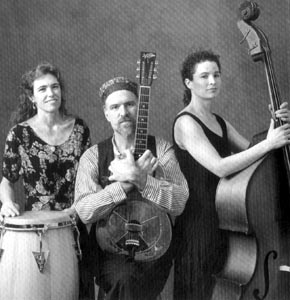
Photograph by Murray Rockowitz
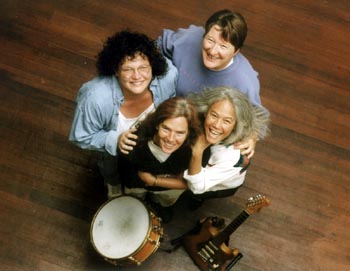
Photograph by Michael Amsler
June Millington & Ann Hackler
--Yovanna E. Bieberich
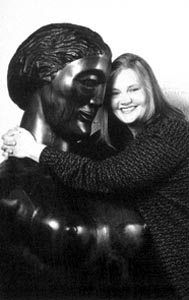 Playing around: Lennie Dean brings challenging theater to the county.
Playing around: Lennie Dean brings challenging theater to the county.
Studio Be
--David Templeton
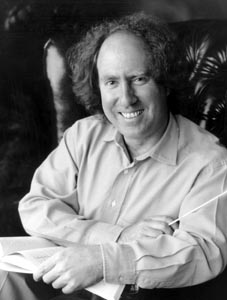 High note: Jeffrey Kahane drew national attention with War Requiem.
High note: Jeffrey Kahane drew national attention with War Requiem.
Santa Rosa Symphony
--P. S.
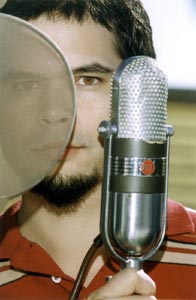 Dean of the scene: Roger Tschann has the county wired for sound.
Dean of the scene: Roger Tschann has the county wired for sound.
Producer/proprietor, Grizzly Studios
29-year-old Tschann features that fact prominently when advertising Grizzly Studios, which has become the de rigueur locale among emerging bands for cutting an album in the North Bay.
--Daedalus Howell
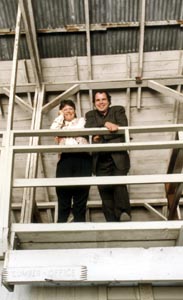 Lofty position: Sebastopol Center for the Arts' Linda Galletta and Mark Morrisette survey their new home.
Lofty position: Sebastopol Center for the Arts' Linda Galletta and Mark Morrisette survey their new home.
--Yosha Bourgea
 Tip of the tongue: Poetry Slam emcee David Amador finds the right words.
Tip of the tongue: Poetry Slam emcee David Amador finds the right words.
Sonoma County Poetry Slam founder
--Marina Wolf
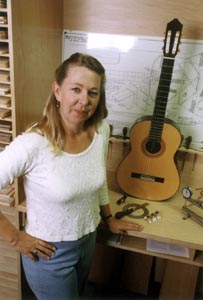 World on a string: Healdsburg Guitar Festival manager Leslie Hall.
World on a string: Healdsburg Guitar Festival manager Leslie Hall.
Co-founders of the annual Healdsburg Guitar Festival
--Y. B.
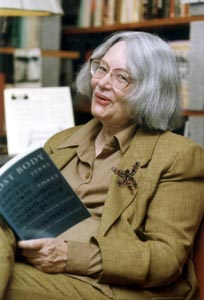 Reader friendly: J. J. Wilson co-founded the Sitting Room.
Reader friendly: J. J. Wilson co-founded the Sitting Room.
Co-founders of the Sitting Room
--Paula Harris
JOIN US for the second annual Indy Awards, and pay homage to some of the many artists who enrich our lives each and every day. This year's event begins with a reception and sneak preview of ARTrails, featuring works by 100 Sonoma County artists, followed by an awards ceremony, and a dance concert featuring the Artifacts, the popular Petaluma-based eclectic acoustic-oriented trio.
From the September 30-October 6, 1999 issue of the Sonoma County Independent.